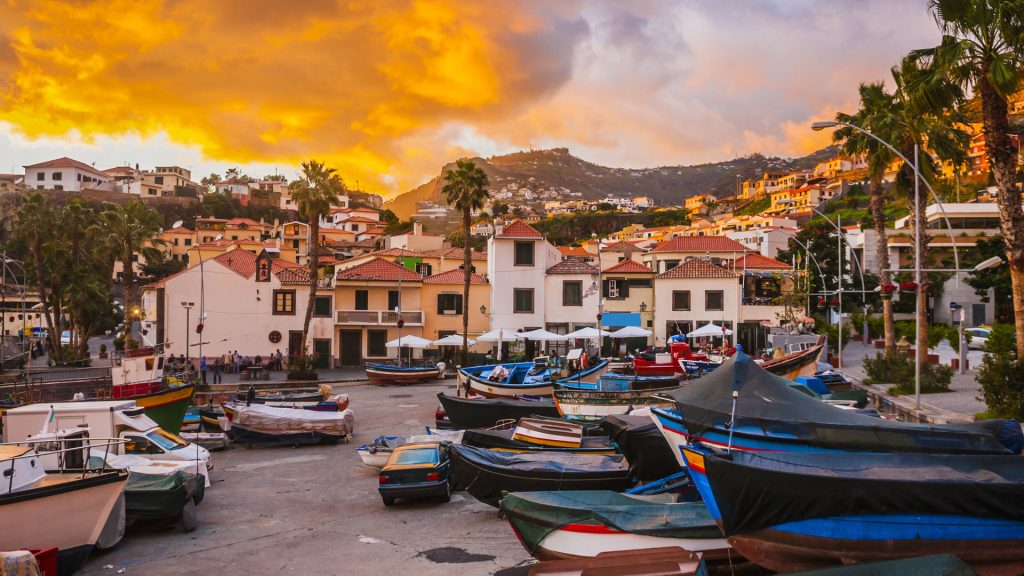A colourful fishing town painted by Winston Churchill
Although Madeira is a small island, every corner is full of unexpected discoveries. One of these is the brightly coloured fishing town of Camara de Lobos, a place that Winston Churchill admired and painted again and again.
The story of a harbour created by nature
Camara de Lobos not only has a picturesque landscape, but also a fascinating history. In the winter of 1419, the Portuguese explorer Joao Goncalves Zarco, on an expedition to explore the archipelago of Madeira, spotted a narrow rocky peninsula stretching towards the ocean. Here, the Portuguese discovered an amphitheatre-like coastline, which was naturally shaped in a way that was ideal for protecting ships from Atlantic storms, and a harbour was established here.

"Miglė Rakauskaitė of Itaka tells us that the coastal town of Kamara de Lobos was one of the first settlements in Madeira in the 15th century. "To this day, the entire Kamara de Lobos district is full of historical heritage that is worth visiting and exploring down to the smallest detail. It is therefore important not to miss a visit to the bay where caravans have been moored for 600 years," says Rakauskaitė.
Sea lions in the port and in the name
Next to the port, Zarco founded the town of Kamara de Lobos, inspired by the sea lions that visit the bay (whose Portuguese name is lobos marinhos). They still come here to this day and are sometimes seen on the southern coast of Madeira. The sea lions have become a symbol of the town and feature on its coat of arms.
No filters needed for photos here
Rakauskaitė points out that the town of Camara de Lobos is special because it has a lot of colours, but they all fit together. The bay is surrounded by white-painted houses, which are haphazardly arranged on the hillsides. The black basalt cliffs contrast spectacularly with the turquoise water. And in the water, fishing boats painted in a variety of colours are another colourful highlight.

"This town is so colourful that every photo taken here looks like a postcard. Everything is so vivid and spectacular that it doesn't need any filters", says Rakauskaitė.
Another interesting feature of the town is the frescoes made of recycled materials and the variously painted doors of the inhabitants at the intersection of R. Sao Joao de Deus Street and the Filhos D'Mar bar.
W. Churchill Route
This fishing town has always been a fascinating and atmospheric place, attracting not only fishermen but also travellers. One of the most famous lovers of this town is Winston Churchill. Fascinated by the local landscape and the excellent wine, he immortalised the town and its surroundings in his paintings. This is why the name of this British politician can be found at almost every turn in Camara de Lobos.
"Travellers are invited to walk Churchill's paths, sit on the bench he often sat on, or enjoy a delicious meal at the restaurant where he ate," says a tour operator.
Fishing and cuisine traditions
Although it has become a favourite destination for travellers, the town still has a special fishing tradition today. The waters adjacent to Camara de Lobos are one of the few places in the world where the black swordfish, better known as espada, is caught. Because of its striking black appearance, this fish is also sometimes called the black monster.
The fishing tradition is also reflected in Madeira's cuisine. Rakauskaitė advises that a visit to Kamara de Lobos is a must if you want to taste the famous dried cod gata. This is a fish that is caught in the waters off Madeira and dried immediately in the port. As a result, when you walk around the city, you can sometimes smell the strong aroma of dried fish in the air.

There are other traditions in the town. In the centre, you'll find many small bars serving the island's most famous drinks. The Poncha, for example, is a traditional Madeiran drink made with rum from local sugar cane plantations and freshly squeezed orange juice. Or the Nikita, made with pineapple ice cream, juice, rum and white beer, the island's traditional cocktail, a town drink created in 1985 by Brazilian expatriate Marcelino, inspired by the freshness of the tropics. Legend has it that the name of the drink was inspired by Sir Elton John's song 'Nikita', a song that Marcelin liked.



